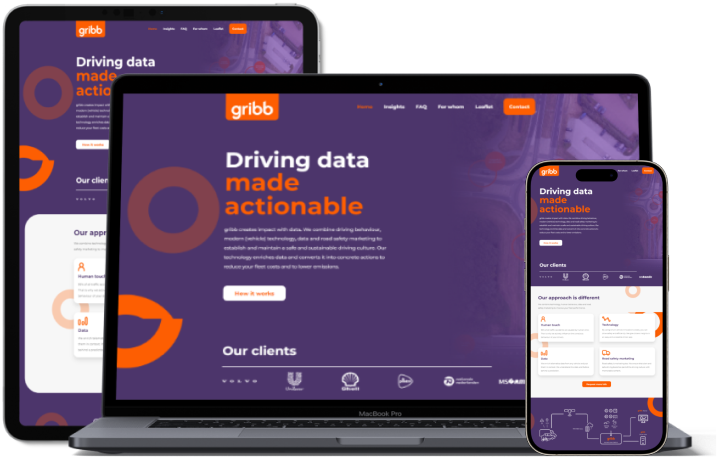In the present exceptionally competitive and globalized marketplace, supply chain management has become one of the most important drivers of business success.
Supply chain management reduces costs, reduces waste, optimizes transportation, and leverages economies of scale through streamlined processes. Improves customer service by providing on-time delivery, ensuring product availability, and efficiently responding to customer needs. Moreover, it improves inventory quality, reducing the chances of shortages or excess inventories, resulting in lower costs and better cash flow.
It speeds up bringing new products to market, giving companies an edge over their competitors. Additionally, good supply chain management lessens risks like wasted resources, quality problems, and compliance breaches, guarding the company and its reputation. Making decisions backed by data and analytics enables data to be used for predicting demand, streamlining inventory, improving route planning, and lessening risks. However, weaving good supply chain management into business plans helps firms meet necessary industry rules and eco-friendly standards, along with company processes.
In this article, we’ll explore the importance of supply chain management in terms of cost reduction, inventory optimization, faster delivery time and many more.

Key Benefits of efficient supply chain management
Cost Reduction
It saves money by making delivery routes better and using large-scale benefits. It minimizes breaks in production. Producers use smart supply chain control to get a steady supply of materials. Consequently, this stops shortages that can halt production. For example, an unexpected loading delay causes a vehicle assembly plant to lose $20,000 per minute. This equals millions in lost money and paychecks. It also drops overall supply chain costs. Running a supply chain smoothly cuts down on steps, lowers the money tied up in stock, makes transport tasks go quicker, reduces trash, boosts how well we stack things, and decreases the price of too much stock. Good supply chain management also finds cheaper ways to get materials and helps get better deals.
Improved Customer Service
A well-functioning supply chain delivers products and services on time, improving customer satisfaction. By managing inventory levels efficiently, companies can fulfil customer orders quickly, reducing the likelihood of stockouts or hold-ups.
Supply chain management helps streamline your distribution networks, making sure your products get to customers fast and dependable. Happy customers often come back. However, keeping an eye on your supply chain means seeing your product’s journey.
Consequently, this includes final production, storage, stock tracking, and even your team packing and shipping to customers. It’s all considered part of the supply chain execution process. With visibility, companies can better understand their inventory levels and deliver more efficiently. It can also help suppliers better understand their inventory level and adjust their deliveries accordingly.
Inventory Optimization
To keep customers satisfied, online stores need a well-thought-out approach to inventory. This way, they avoid a shortage or an oversupply of products. Using smart inventory management, companies can lessen the risk of empty shelves when customers are ready to buy. The art of inventory optimization is central to managing supply chains. Online businesses need this balance. It’s about having the right products available to match what customers want, without any overstock. Therefore, managing stock wisely helps companies find the perfect middle ground. They keep just what’s needed to fulfil customer demands and avoid wasteful overabundance from poor inventory handling.
Faster Time to Market
Good supply chain management makes businesses work better. It cuts out extra steps, saves money, and uses resources wisely. Better stock control means stores won’t run out or have too much. They spend less money storing too much inventory, which increases cash flow. Also, the right supply chain means quicker turnaround times, fulfilling customers’ needs faster and getting orders delivered quicker, which makes customers happier. Smart control of the supply chain can give businesses a big leg up. By enhancing their supply chain actions, firms can set themselves apart. They can do this by having better product availability, cutting down on waiting times, and offering superior experiences for customers. However, this leg up can result in more market share, better profits, and lasting success in the worldwide market.
Risk Mitigation
Managing the flow of materials and products in a business is critical. Moreover, it helps businesses pinpoint possible roadblocks like delays, product problems, or rule breaks, keeping their operations and good name safe.
Doing checks on weak spots and future roadblocks in the movement of goods. Creating backup plans and applying smart ways to deal with risks. However, tactics include having more than one supplier, duplicating processes, or using safety nets like insurance or contracts. Staying alert and having fast response systems to spot potential speed bumps fast. Putting in place quality checks and supplier reviews to stick to the rules and avoid poor product quality. However, assured the goods moving process was clear and easy to track to spot and handle risks.
Enhanced Collaboration
Supply chain management encourages collaboration and communication between supply chain partners, manufacturers, distributors and retailers, leading to greater efficiency and responsiveness in supply chains of all Includes:
- Communication channels and information sharing between supply chain partners
- Alignment of goals, strategies and performance metrics across the supply chain
- Additionally, facilitate planning, decision making and problem-solving among stakeholders
- Collaborative technologies and platforms for exchanging and synchronizing real-time information
- Building trust and long-term relationships with key suppliers.
Sustainability
Sustainable supply chain management can include:
- reduce carbon footprint
- It reduces waste
- promoting ethical sources
- Reducing environmental and social responsibility
- sustainable sourcing practices
- Supplier Code of Conduct
- Optimization of transportation methods and procedures
- To reduce carbon and fuel consumption
- Reuse, recycle, rebuild, and a circular economy
- Measure and report on sustainability performance and progress towards goals
- Work with supply chain professionals
- Sustainability throughout the network
Market Expansion
A well-thought-out supply chain helps companies expand into new markets and new regions to grow and operate globally. This includes:
- Understand local market trends, regulations, and consumer preferences
- Supply chain strategies and strategies were implemented to meet the specific needs of emerging markets.
- Access local supply chain relationships and strategies
- It also, optimize transport and logistics networks for distribution across multiple regions
- Ensure compliance with local regulations, operating procedures and customary requirements
- Take advantage of the flexibility and adaptability of the supply chain to respond quickly to changing market conditions
Data-Driven Decision Making
Today’s business scene is active, pushing the need for data-centered choices in managing supply chains. Looking at a wealth of data allows firms to gather guiding info for their choices. Consequently, supply chain management (SCM) uses stuff like machine learning (ML) and predictive modelling (PML) for preparing and refining demand.
These powerful tools review past data, market trends and buyer actions to predict demand better. Moreover, IoT hardware like sensors and tracking tools have vastly improved visibility within supply chains. Consequently, live data from these IoT items let supply chain bosses see activities, movement, and status. At the end, this paints a clear picture of goods in transit, delivery locations, and asset usage.
Compliance and Regulation
Strong processes and procedures can be implemented to ensure that supply chain managers comply with relevant laws and regulations. First, this includes a thorough risk assessment, the establishment of standard operating procedures (SOPs), and a culture of compliance within your organization and with your supply chain partners
Staying compliant in your supply chain is as important as ever. To do this, supply chain managers must actively monitor regulatory changes and quickly update their supply chain practices. Furthermore, this can include optimizing processes, adopting new technologies, and negotiating contracts and contracts among suppliers.
One of the most important ways to maintain compliance throughout your supply chain is to use traceability techniques. This means creating clear channels of communication and sharing best practices. That also means creating a culture of accountability and continuous improvement across your supply chain. At last, to streamline your adherence system with tools including specific software for compliance, unified ERP setups, centralized platforms to handle regulatory standards, metrics for managing compliance, and detailed reports on compliance, it lowers mistakes, decreases hazard, and bolsters productivity.
Conclusion
In conclusion, good supply chain management is key in the cut-throat world of business we live in today. It boosts profits, shrinks expenditures, optimizes transport, and drives the economy forward. By bettering customer service, slashing time to market, reducing risks, enhancing collaboration, and stressing sustainability, speedy market growth becomes feasible. Data-driven decisions become possible, compliance gets stronger and your edge over the competition gets sharper with effective supply chain management. In today’s fast-paced business landscape, supply chains are everywhere, customer needs shift constantly and transparency is a must-have. Thus, overlooking due diligence won’t do, take the deal. Firms that treat supply chain management as a priority and invest in it will handle the complex business arena better, adapt to changes smoothly, and finally find long-term growth and triumph.
FAQs
What are the main benefits of efficient supply chain management?
The main benefits include cost reduction, improved customer service, inventory optimization, faster time-to-market, risk mitigation, enhanced collaboration, sustainability, and enabling market expansion.
How does supply chain management reduce costs?
Ans. It boosts the way things work, lowers costs for stock, cuts out waste, and improves how we use storage. It also finds better-priced sources and uses the advantage of size for smoother running.
How does it improve customer service?
Handle inventory carefully to get orders out fast. We make sure deliveries are on time by perfecting our distribution networks. Additionally, we let you know where your order is with supply chain visibility.
How does supply chain management facilitate market expansion?
It paves the way for grasping local markets, deploying customized plans, tapping into neighborhood supply chains, enhancing distribution schemes throughout areas, and confirming alignment with regional laws.
What are some key elements of sustainable supply chain practices?
Cutting down our carbon imprint, reducing waste, supporting fair trade practices, advocating for social accountability, promoting green travel options, reusing and recycling, along with evaluating our sustainability efforts.






